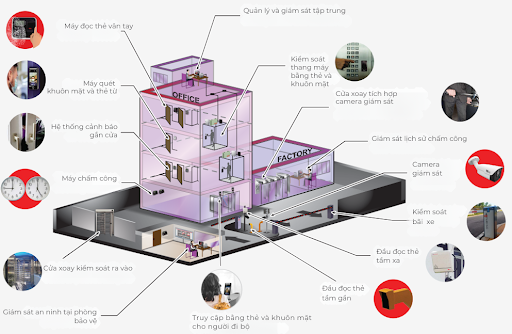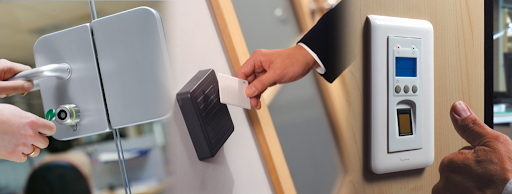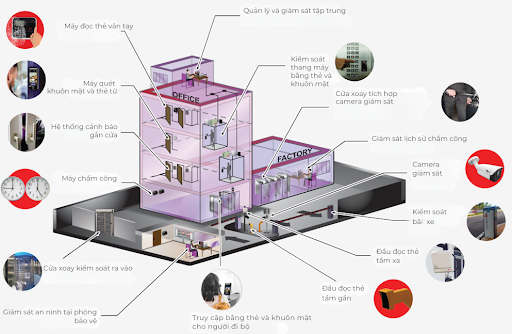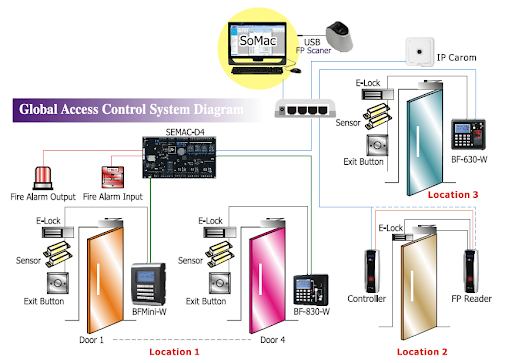Building Access Control
1. Why Building Access Control is Necessary
Building access control systems help ensure security, protect property, manage personnel, and enhance the experience of residents or employees. By using advanced technologies, these systems help prevent unauthorized access, minimize theft risk, and increase operational efficiency.
2. Main Components of Building Access Control Systems
An effective access control system typically includes the following components:
- Central controller: Manages, processes data, and grants access permissions.
- Authentication devices
- Door control devices
- Management software: Monitors, grants permissions, and stores access history.
3. Areas Requiring Access Control in Buildings
- Main entrances and lobbies: Restrict unauthorized people from entering the building.
- Elevators: Only allow residents, employees, or guests to access specific floors.
- Office areas: Ensure only authorized employees can enter.
- Parking areas: Integrate license plate recognition or key cards to manage vehicles.
- Technical and data rooms: Restrict access to critical areas.

4. Advantages of Building Access Control Systems
- Enhanced security: Minimize intrusion risks and ensure safety for residents and employees.
- Integration with other systems: Connect with security cameras, alarm systems.
- Optimized operations: Reduce personnel costs, automate access control.
- Improved user experience: Residents and employees can enter and exit the building easily and quickly.
5. Practical Applications of Building Access Control Systems
- Office buildings: Control access for employees and customers.
- Luxury apartments: Ensure security for residents, integrate with smart elevators.
- Hotels: Manage access using key cards, mobile applications, or biometrics.
- Shopping centers: Control warehouse areas, parking lots.
6. Development Trends in Building Access Control Systems
- AI and IoT applications: Smart systems can detect and alert when anomalies occur.
- Contactless biometrics: Facial recognition helps enhance security.
- Remote control via cloud: Easily manage access permissions from anywhere.
- Integration with smart building ecosystems: Combine with lighting, air conditioning, and security systems to optimize operations.
Conclusion
Building access control systems play an important role in ensuring security, optimizing management, and enhancing user experience. With technological developments, control solutions are becoming increasingly smart and efficient, meeting security needs in modern buildings.
Table of contents


